Let’s just say, this bracket is loaded for BEAR! Packed with all-time favorites, including two of the most visited national parks – Zion and Yosemite – and other iconic sites from the Golden Gate to the Sunshine State. Read more below or enter your votes now.

(1) Zion vs (16) Devils Tower


A battle of geological formations millions of years in the making. This competition features a mystical desert against a sacred mountain. How does the match-up shape up?
Located in southern Utah, Zion’s towering sandstone cliffs, vibrant canyons, and lush vegetation draw over 4.5 million visitors annually. True adventurers tackle the fearsome Angels Landing Trail, while keen photographers capture the golden glow of the Narrows’ stunning gorge and towering cliffs. Wildlife like mule deer and soaring California condors add to Zion’s appeal.
Rising dramatically from Wyoming’s plains, Devils Tower is a geological and cultural icon. This basalt monolith is sacred to Native American tribes, who revere it as Bear Lodge. Though it sees fewer visitors (500,000 annually), it boasts a starring role in Close Encounters of the Third Kind and is home to chirping prairie dogs. Stunning under the stars, awesome in the light of day it’s one of America’s most unique places.
Both parks take you on road trips through the legendary West. Which will win?
Best moves: Hike through the Narrows in Zion, wading through cool water with canyon walls rising 1,000 feet around you. Or walk the Tower Trail at Devils Tower and crane your neck at its sheer volcanic column—sacred, silent, and surreal.
Watch Trekers’ Amazing Angels Landing Hike and the History Underground’s Teddy Roosevelt & Devils Tower
(8) Teddy Roosevelt vs (9) Badlands
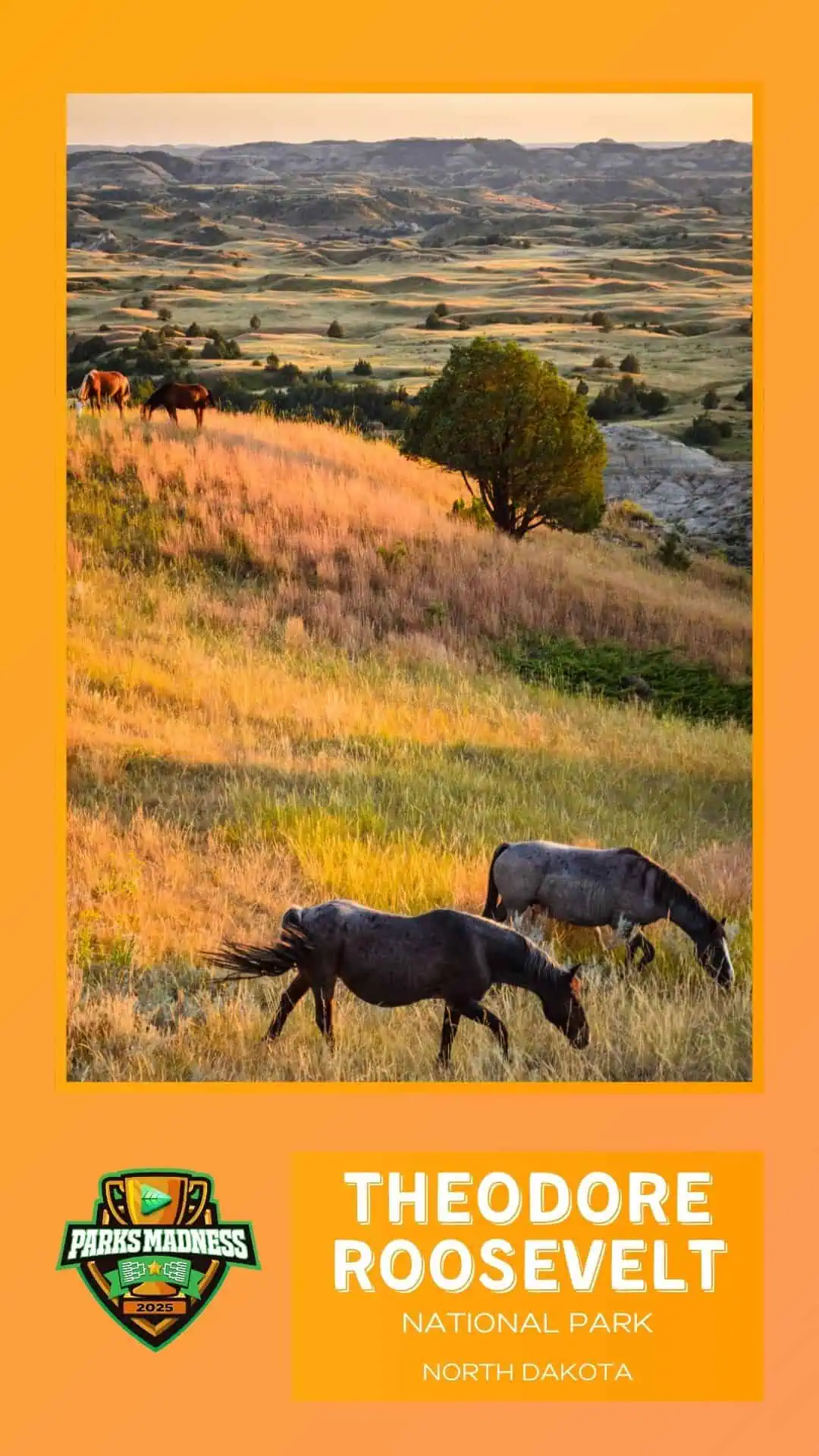
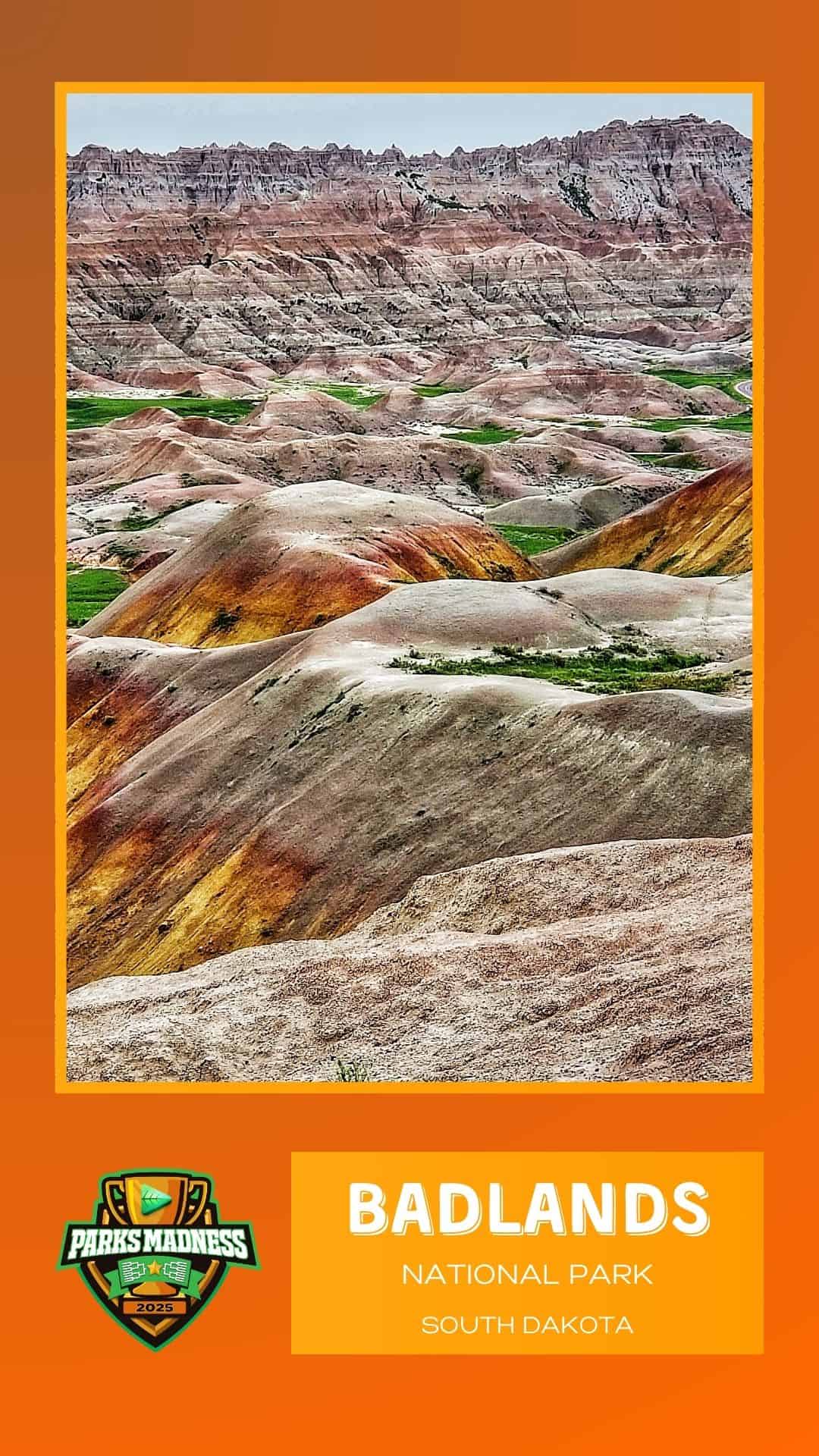
This matchup features one Dakota against the other, a border dispute between South Dakota’s Badlands and North Dakota’s wilderness. Only 300 miles of Great Plains separate these two completely different worlds.
Located in North Dakota, Theodore Roosevelt National Park honors the president who championed conservation and preserved 230 million acres. Visitors explore rolling prairies, painted canyons, and encounter roaming bison and wild horses. Covering 70,446 acres it attracts fewer than 800,000 visitors a year.
South Dakota’s Badlands is a geological wonderland of striking buttes, pinnacles, and colorful rock layers. Home to one of the world’s richest fossil beds, the park attracts over one million visitors annually. Its dramatic landscapes glow at sunrise and sunset, while the park also shelters the endangered black-footed ferret. Will its prehistoric treasures and breathtaking scenery take the win?
Best moves: A visit to Elkhorn Ranch, where Roosevelt found inspiration after the double loss of his wife and his mother on the same day in 1884, is a must. To truly get that back in time feeling, check out Prairie Wind Overlook in the Badlands, one of the few places of tall grassland prairie that has never been plowed or cultivated.
Watch The History Underground’s A Look at Life on the Prairie; watch We’re in the Rockies’ Theodore Roosevelt NP: So Underrated.
(5) Grand Teton vs (12) Mammoth Cave
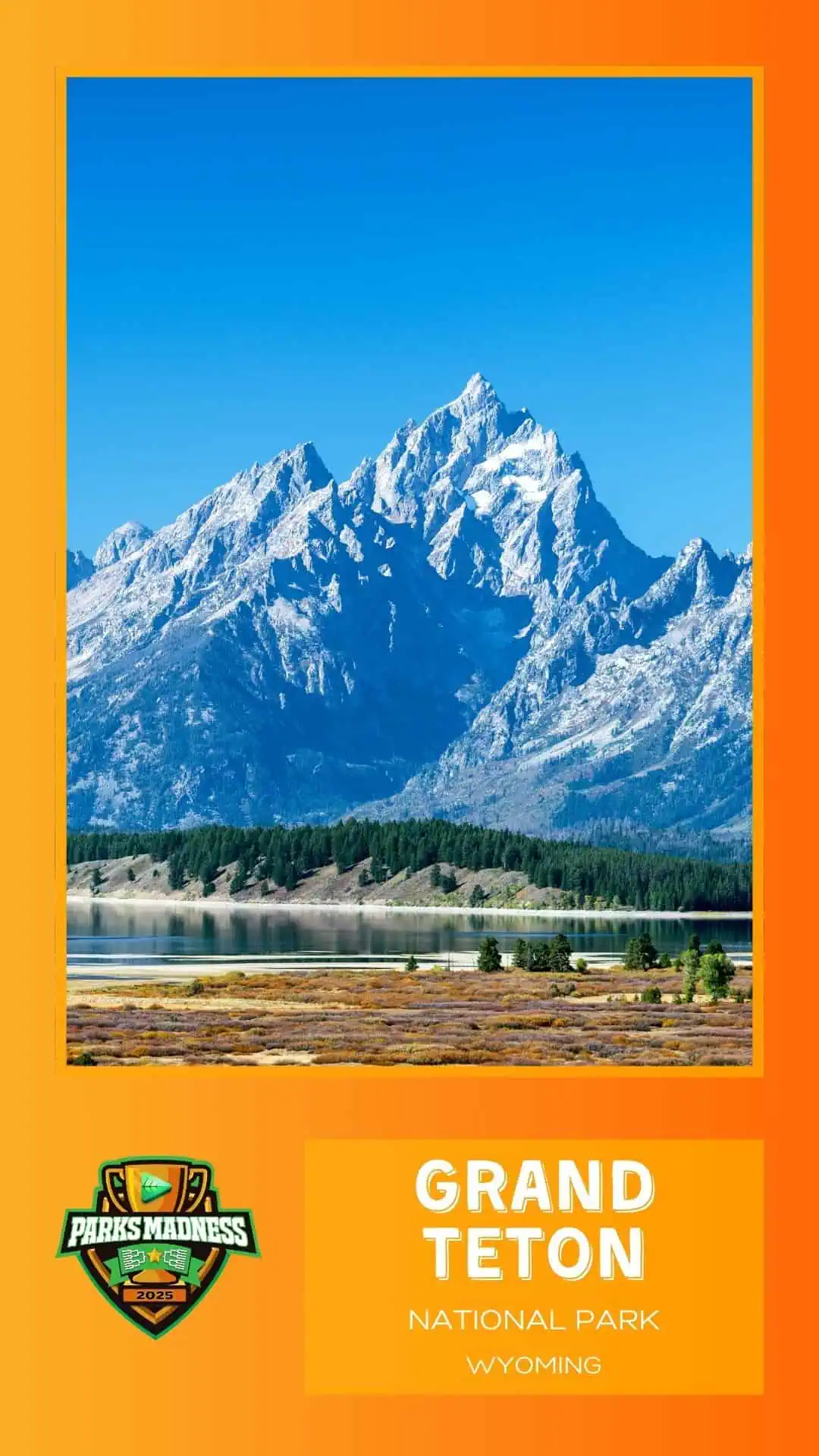
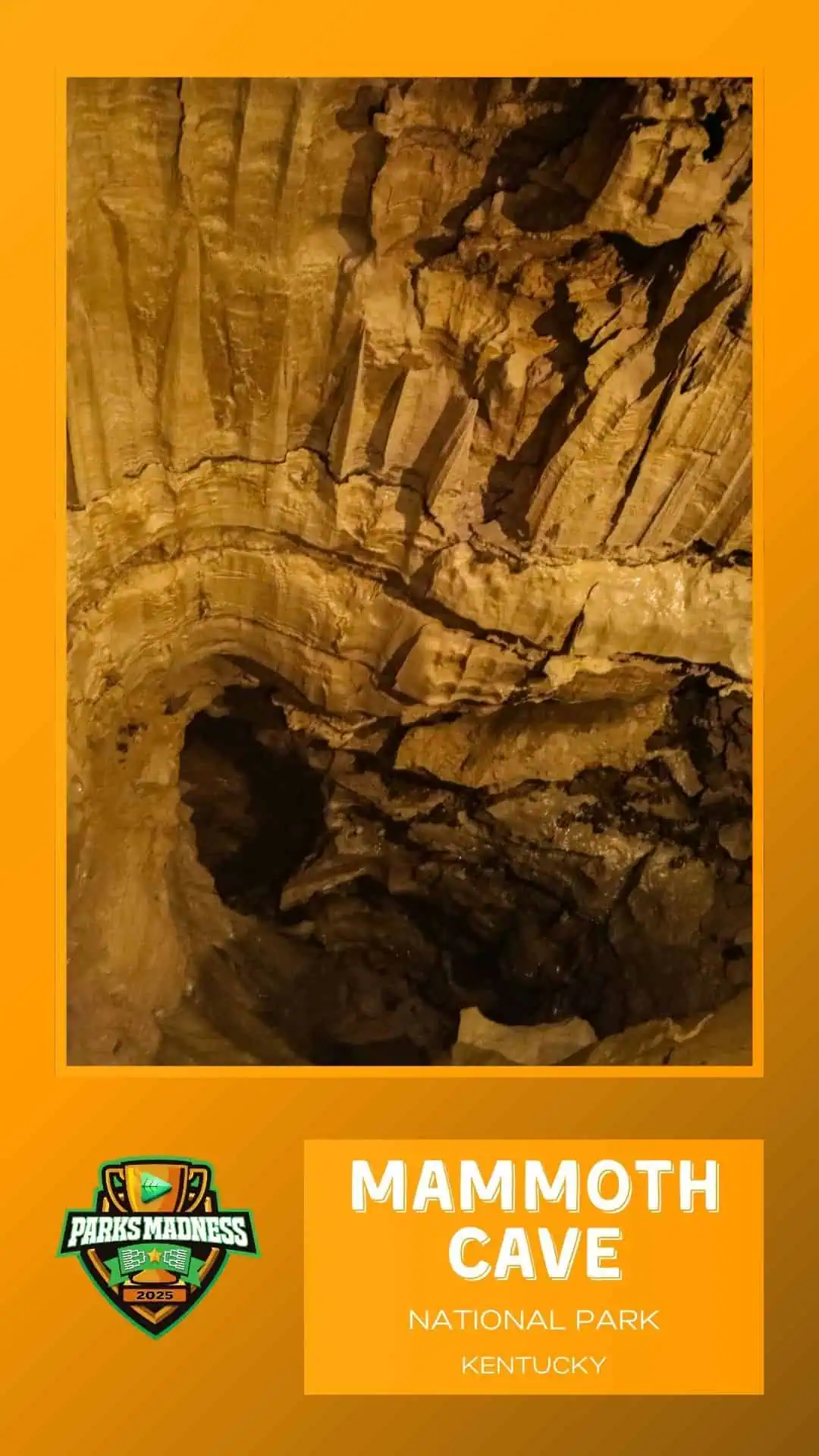
It’s mountain majesty vs. underground mystery in this thrilling round-one matchup.
Grand Teton National Park is a jaw-dropping alpine paradise, where jagged peaks rise straight from the valley floor and wildlife like moose, bears, and bison roam free. With over 3.4 million annual visitors, it’s a dream for hikers, climbers, photographers, and anyone who craves a dose of rugged Rocky Mountain beauty. Whether you’re paddling on Jenny Lake or watching the sunrise hit the Teton Range, it’s pure postcard perfection.
But don’t overlook Mammoth Cave—it’s hiding a world beneath the surface. Home to the longest known cave system on Earth, this Kentucky gem invites explorers to descend into a labyrinth of tunnels, chambers, and eerie rock formations. Around 500,000 people venture underground each year, marveling at this geological wonder that stretches more than 400 miles. From lantern-lit tours to the bizarre beauty of dripstone formations, Mammoth Cave offers an adventure unlike anything above ground.
So what wins: the soaring peaks and sweeping vistas of the Tetons, or the ancient, otherworldly depths of the world’s longest cave system?
Best Moves: Watch the sun set behind the Tetons from Mormon Row’s historic barns, or take a historic lantern tour through Mammoth Cave’s pitch-black passages for a spine-tingling thrill.
Watch Grand Teton Trip Planner from We’re in the Rockies; watch Mammoth Cave NP: How to Visit & What to See from Megatherium Club.
(4) Everglades vs (13) Death Valley

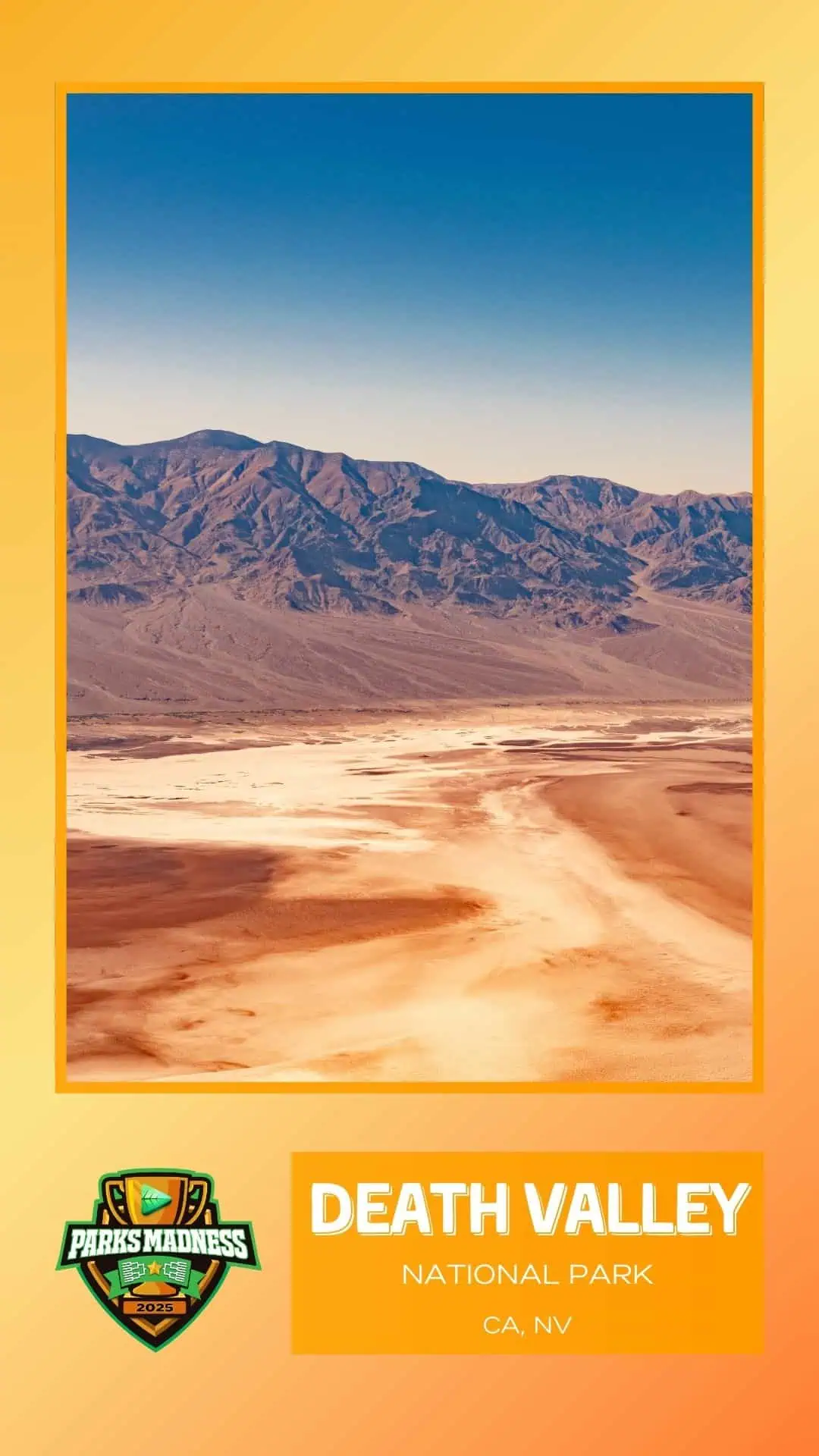
This matchup is a storied rivalry of east versus west, wet versus dry, grass versus dust. Neither are strangers to high temperatures in this triple digit competition.
Spanning 1.5 million acres in southern Florida, the Everglades are a biodiversity hotspot. As the largest subtropical wilderness in the U.S., the park is home to American crocodiles, manatees, and the elusive Florida panther. Visitors can glide through wetlands on airboat tours, explore sawgrass prairies, and spot rare birds. With 1 million visitors annually, the Everglades offer a peaceful yet wild escape. Can its ecological richness claim victory?
Straddling California and Nevada, Death Valley is a land of extremes. It holds records as the hottest, driest, and lowest national park, featuring surreal landscapes like Badwater Basin, Dante’s View, and Artist’s Palette. Rich in gold mining history and Native American heritage, it draws 1.1 million visitors annually. It’s also the 3rd largest park in the lower 48. Hardy wildlife like the kit fox thrives in its unforgiving terrain. Will its dramatic vistas and record-breaking status take the win?
Best moves: Glide silently through Everglades’ mangrove tunnels on a guided kayak tour—keep an eye out for gators and roseate spoonbills. Or catch the sunrise at Zabriskie Point in Death Valley, where pastel badlands glow before the desert heat kicks in.
Watch the Center for Environmental Filmmaking’s National Parks in the History of Science: Island Biogeography, or learn more about how to Experience Death Valley’s Unique Landscape.
(6) Canyonlands vs (11) Cuyahoga Valley
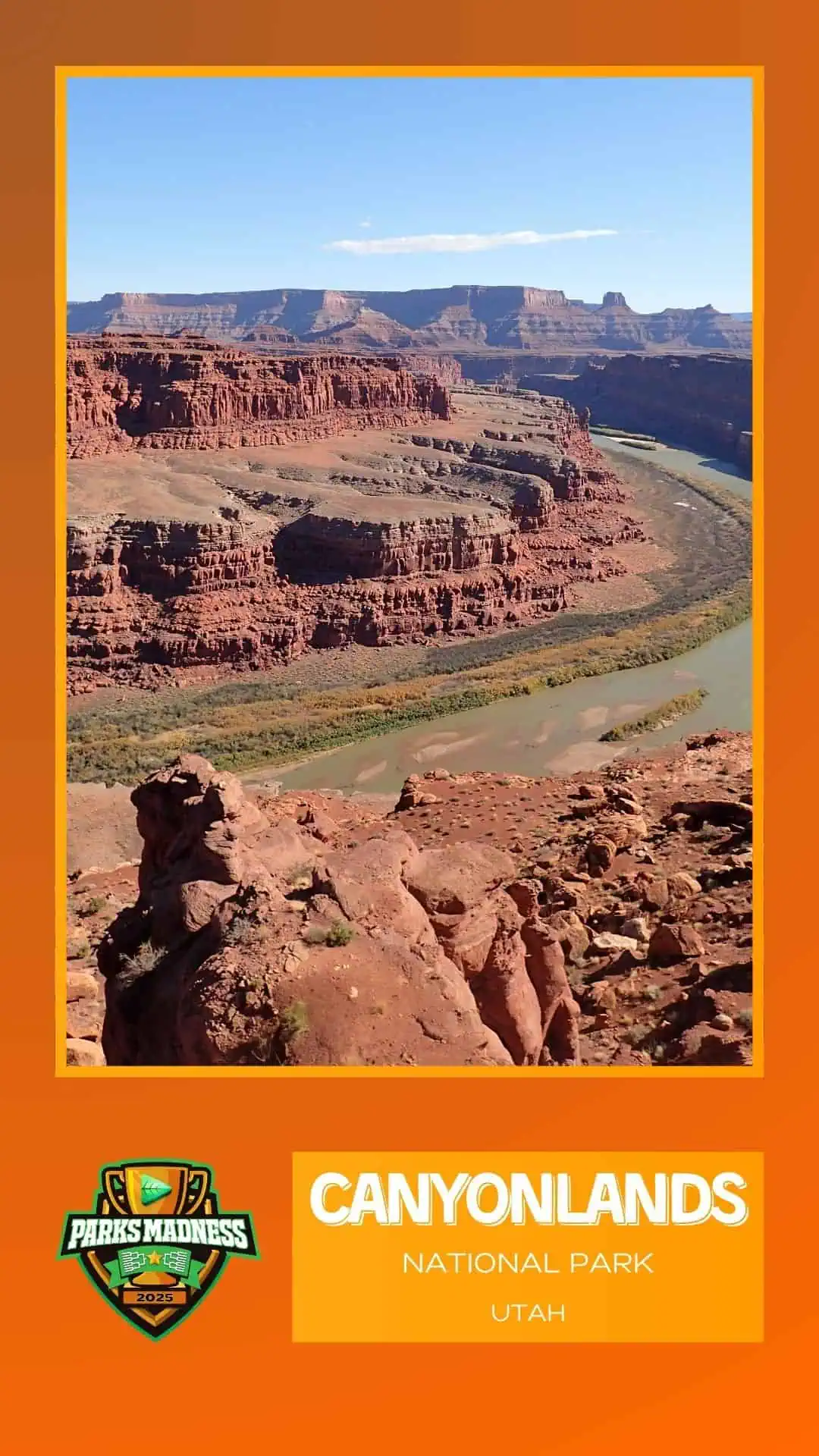
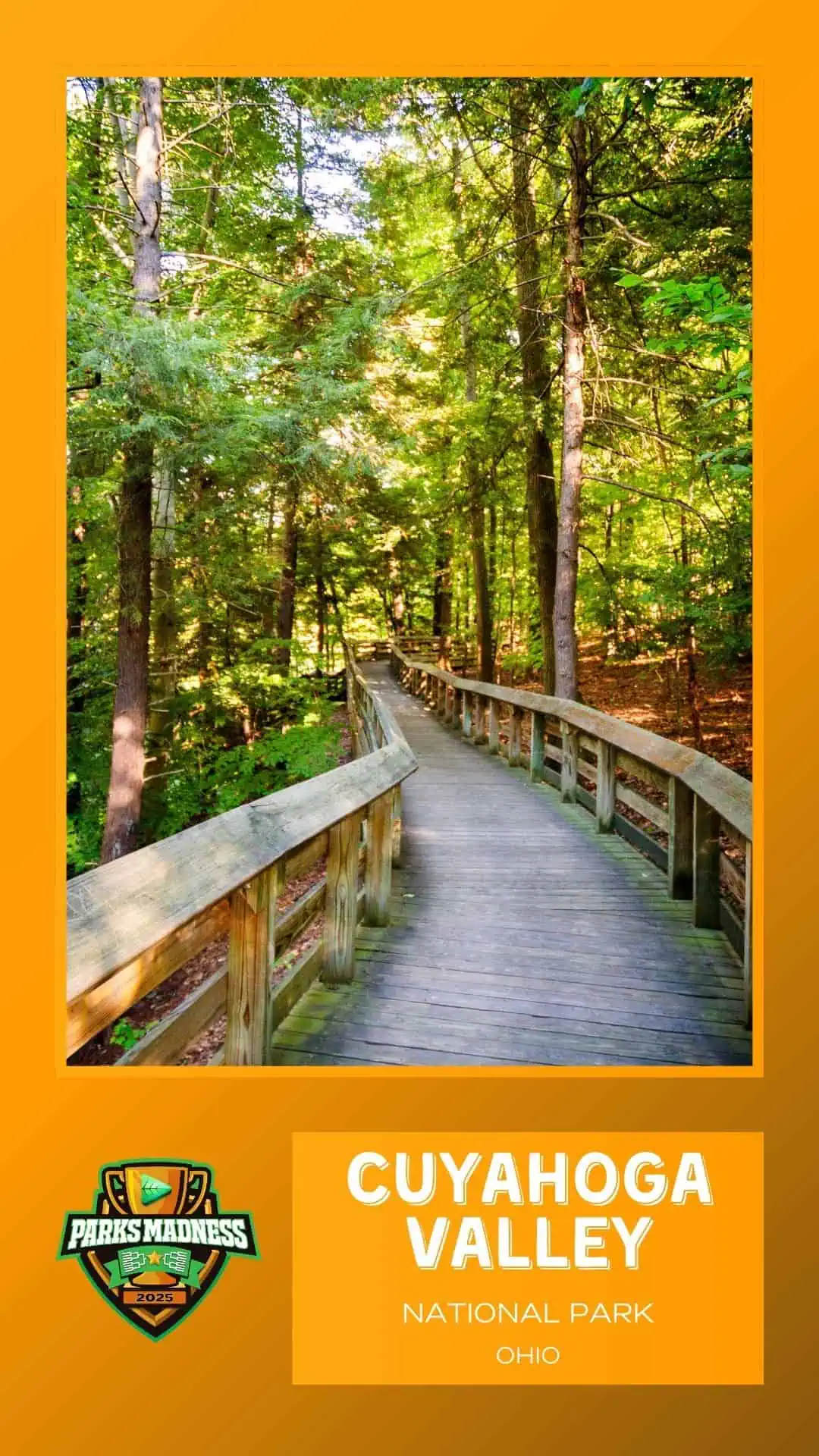
It’s red rock drama versus Midwestern charm in this high-stakes face-off.
Canyonlands National Park is a rugged wonderland sculpted by the Colorado River, where vast canyons, towering mesas, and twisted rock formations stretch as far as the eye can see. Split into four districts, including the iconic Island in the Sky, this Utah park is a haven for backcountry adventurers, stargazers, and anyone craving solitude amid jaw-dropping scenery. It draws about 775,000 visitors annually—but those who make the journey are rewarded with silence, scale, and unforgettable views.
On the flip side, Cuyahoga Valley brings nature right to the doorstep of Cleveland and Akron. With more than 2.9 million visitors a year, this Ohio park is a beloved urban escape, filled with lush forests, scenic waterfalls, and a historic towpath trail that follows the old Ohio & Erie Canal. It’s not about extreme landscapes—it’s about accessibility, nostalgia, and the power of green space to transform city life.
So what wins: the cinematic grandeur of Canyonlands’ desert vistas or the everyday magic of a park that seamlessly blends nature into the urban landscape of northern Ohio’s industrial heartland?
Best Move: Catch sunrise over Canyonlands’ Mesa Arch for a glowing, once-in-a-lifetime view, or bike the Ohio & Erie Canal Towpath through fall foliage for a perfect blend of history and heartland beauty.
Watch Alice Ford’s Exploring the Needles District in Canyonlands. Watch Cuyahoga Valley NP by Foot, Bike, & Train with Adventures of A+K.
(3) Golden Gate vs (14) Redwood
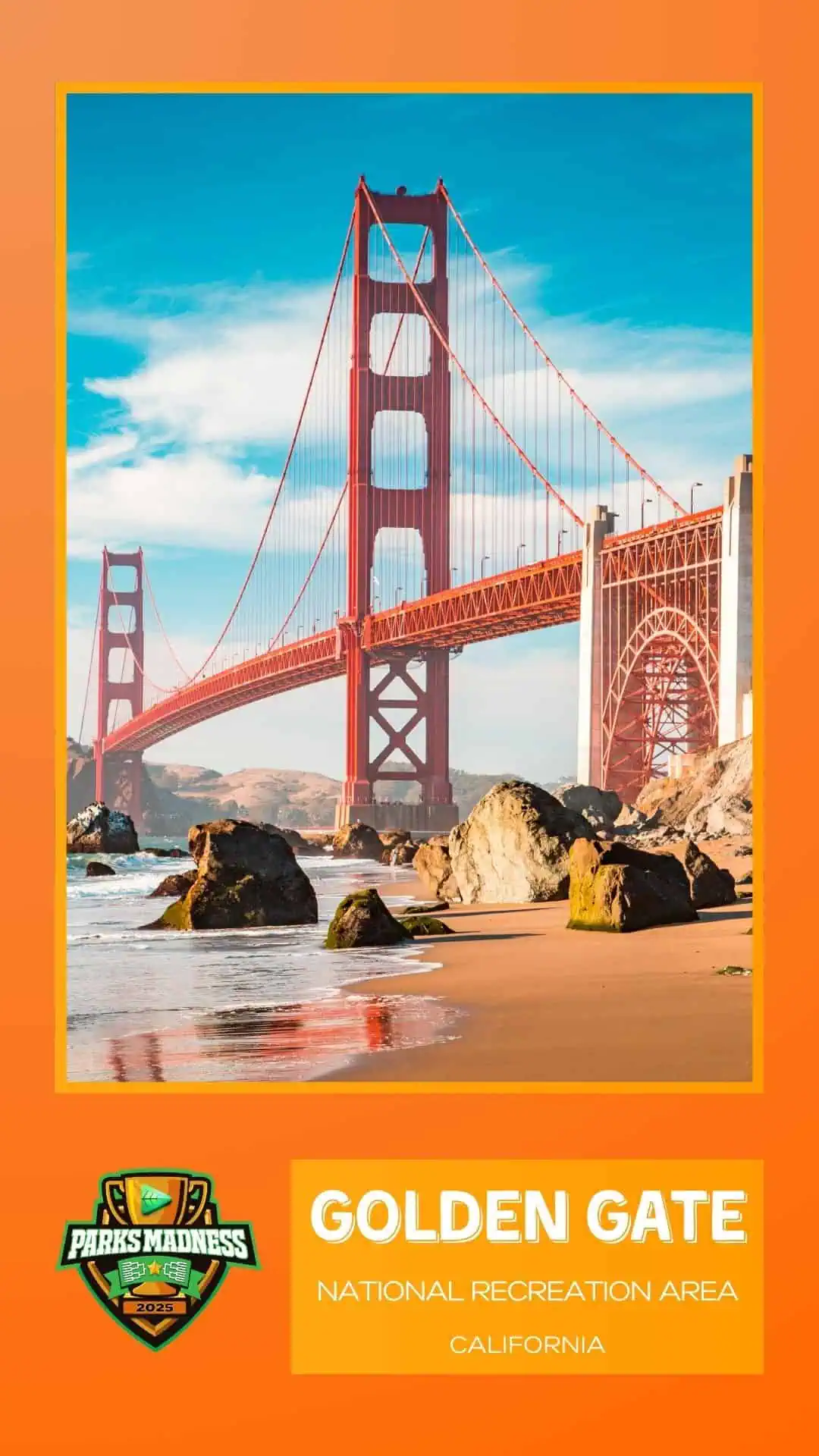

It’s a California clash between coastal cityscapes and towering ancient forests.
Golden Gate National Recreation Area is one of the most-visited units in the National Park System, drawing more than 15 million visitors a year to its dramatic bluffs, historic military sites, and iconic views of the Golden Gate Bridge. Spanning 80,000 acres across multiple sites around the San Francisco Bay, this park offers everything from beaches and bike paths to Alcatraz Island tours and former missile silos—urban exploration with serious scenery.
But Redwood National and State Parks bring the magic in a quieter, more colossal way. Home to the tallest trees on Earth, this northern California wonderland is a cathedral of old-growth forest, where ferns carpet the ground and fog drifts through ancient trunks. With about 435,000 annual visitors, it’s far less trafficked than its urban cousin, but what it lacks in numbers it makes up for in awe. Whether you’re hiking among giants or spotting Roosevelt elk in a misty meadow, Redwood is a humbling, otherworldly experience.
So what wins: the versatility and vibrance of a park woven into one of America’s most iconic cities, or the hushed grandeur of a forest older than history?
Best Move: Walk the Batteries Loop Trail for sweeping views of the Pacific, or hike the James Irvine Trail to Fern Canyon for a prehistoric stroll among giants.
Watch Bridging Times: An Icon of Innovation from Iconic America; watch The Majesty of Redwoods National and State Parks from Trekers.
(7) Mount Rainier vs (10) Arches


It’s a showdown between a snow-capped giant and a red rock wonderland.
Mount Rainier rises like a myth above Washington state—14,410 feet of glacier-covered drama that dominates the skyline and fuels wildflower-filled meadows and roaring waterfalls. Over 1.6 million visitors a year come to hike its alpine trails, marvel at its icy peaks, and test their skills on one of the most glaciated summits in the lower 48. It’s not just a mountain—it’s an ecosystem, a challenge, and a symbol of the Pacific Northwest.
Arches, on the other hand, offers a desert spectacle that’s all about sculpted stone and open skies. This Utah favorite boasts over 2,000 natural arches, plus fins, pinnacles, and balanced rocks that seem almost too surreal to be real. With around 1.4 million annual visitors, it’s slightly less traveled but no less beloved—especially for sunrise hikes through Devils Garden or stargazing beneath impossibly dark skies.
So what wins: the glacial majesty and alpine ecosystems of a true mountain titan, or the fantastical rock formations and fiery sunsets of the red rock desert?
Best Move: Wildflower hike at Mount Rainier’s Paradise in July for peak blooms and big views, or sunset at Delicate Arch for a fiery finish you’ll never forget.
Watch Hiking Devils Garden from We’re in the Rockies and National Park Diaries’ Arches National Park: How Did It Form?

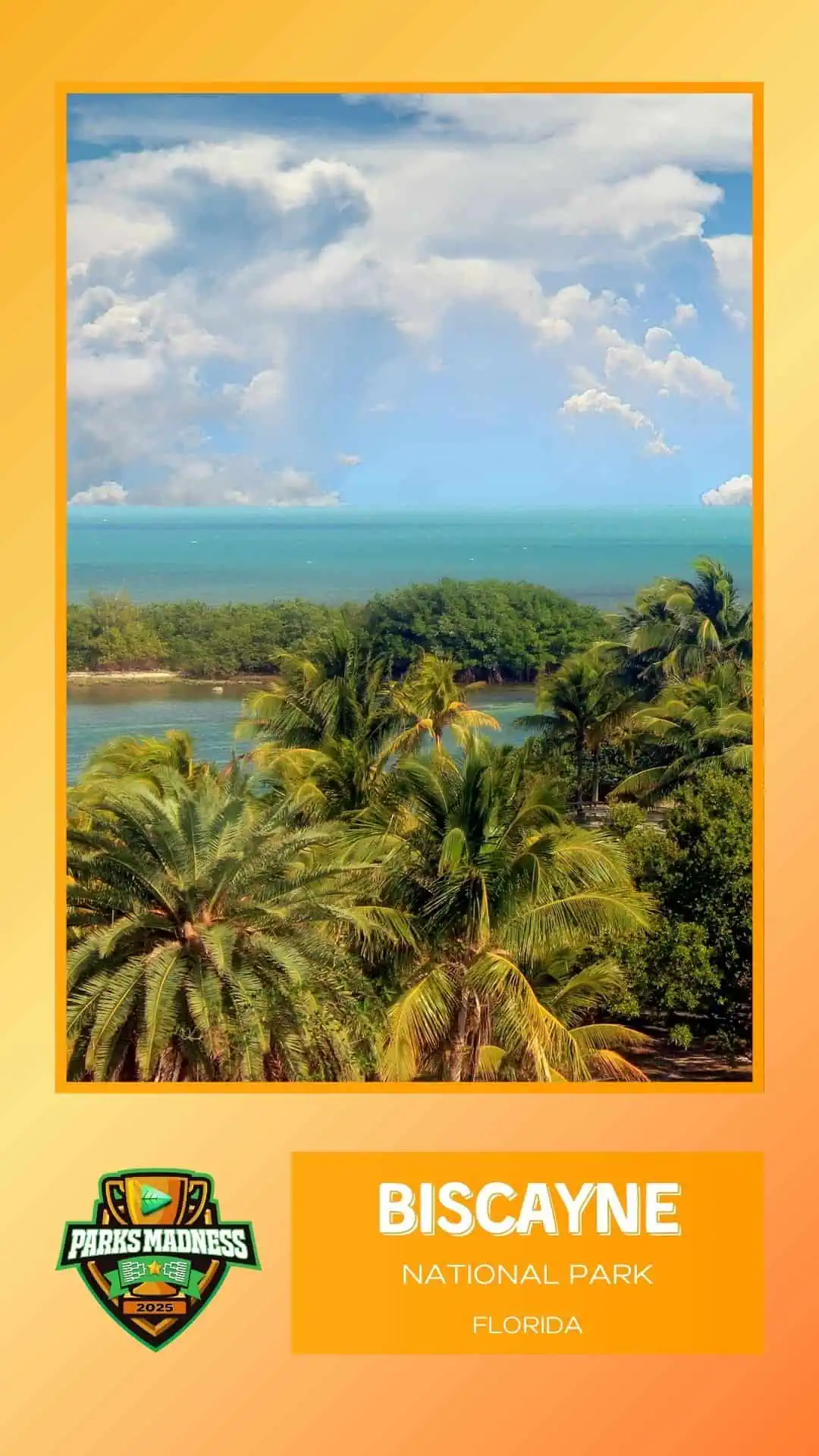
It’s granite cliffs versus coral reefs in this coast-to-coast clash.
Yosemite National Park is a crown jewel of the Sierra Nevada, drawing over 3.8 million visitors a year to its waterfalls, granite icons, and ancient sequoias. From the towering face of El Capitan to the misty plunge of Yosemite Falls, it’s a land of giants and a pilgrimage site for climbers, hikers, and photographers alike. It’s dramatic, iconic, and packed with natural wonders that have inspired generations.
But Biscayne National Park makes its case below the surface. Just outside Miami, this mostly water-based park protects a dazzling slice of the Atlantic—mangrove shorelines, coral reefs, and the northernmost stretch of the Florida Keys. With under 800,000 annual visitors and no roads leading in, it’s a hidden gem best explored by boat, kayak, or snorkel. Think shipwrecks, sea turtles, and tropical fish instead of granite domes and alpine meadows.
So what wins: the high drama and historic legacy of Yosemite’s granite cathedrals, or the underwater wonders and Caribbean vibes of Biscayne’s marine playground?
Best Move: Stand at Tunnel View for a sweeping panorama of Yosemite Valley, or snorkel the Maritime Heritage Trail to explore shipwrecks teeming with marine life.
Watch Solo Winter Adventures in Yosemite with Alice Ford; watch Biscayne NP Has a Trail Unlike Any Other by National Park Diaries.

